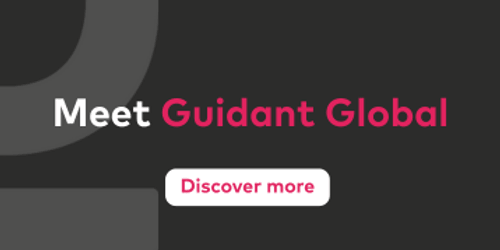

Author
4 minutes
Making the most of recruitment data analytics
Data-driven hiring is not a new concept, but in recent years the quality and availability of workforce insight has improved exponentially. Recruitment data analytics are helping businesses drive informed decision-making to achieve superior planning and outcomes in relation to the workforce.
Here’s what you need to know about harnessing the power of recruitment metrics.
The power of recruitment data analytics
As highlighted in a special report by Everest Group, data-informed decision-making has become key to achieving superior outcomes in contingent workforce management programmes. Advanced analytics and analytics-enabled artificial intelligence (AI) are in use across the entire contingent spectrum, and they’re experiencing a huge surge in adoption.
Investment in analytics is also a top priority for MSPs and staffing providers, some of which have developed their own proprietary analytics platforms to provide customers with essential insight into three key areas:
- the workforce itself
- their suppliers, and
- their spend profile.
Let’s look at why data-driven decision-making is so important in those three areas.
Workforce analytics
Workforce analytics offer visibility into different aspects of the contingent workforce to support the effective leveraging of resources across an entire workforce programme. This includes identifying and tracking different aspects of the workforce, such as:
- high performers
- headcount
- time to hire
- turnover
- quality of hire, and
- source of hire.
Thanks to advanced people analytics, talent leaders now have the ability to map their entire workforce. By digitally tracking the availability of skills both within the business and externally in the market, leaders can:
- see where permanent and contingent workforces can be deployed most effectively
- identify the skills they are lacking, and
- determine if skills can or should be acquired on a full-time, flexible, contingent, or statement of work basis.
By working in this way, organisations can ensure teams are performing to maximum efficiency, without skills gaps – or a skills surplus.
With this complete visibility of skills on the ground, organisations can focus their efforts on upskilling team members or hiring contingent workers to meet demands and fill gaps, so that each individual – and the business as a whole – has the opportunity to reach their full potential.
Supplier analytics
As Everest Group notes, supplier analytics offer the tools to track and benchmark supplier performance within and across a range of contingent workforce programmes. This includes tracking different aspects of supplier performance including fill rate and assignment completion rate.
Here at Guidant Global, our interactive platform for assessing supplier performance, VISION, has enabled us to take programme visibility to the next level and improve supplier performance thanks to the real-time data it provides.
Using PowerBI data, VISION pulls real time information on thousands of recruitment suppliers across hundreds of workforce programmes – past and present – in a way that can be ‘sliced and diced’ to suit specific research and benchmarking needs. This means our customers have a wealth of information they can use to make informed decisions about who is best placed to supply the talent they need.
This data is a powerful tool for future decision-making and can be used as a roadmap to solve complex organisational problems in real-time rather than simply relying on trends from six months ago. Being able to take a programme health check at any time means that we can identify and correct any performance issues rapidly and use comparable programmes from across our portfolio as a benchmark. It also allows us to meet specific needs for hard-to-fill roles, by identifying the top suppliers for a given job category, location, or worker type.
Spend analytics
Spend analytics are essentially focussed on optimising an enterprise’s non-employee workforce by offering visibility and ‘trackability’ across multiple labour types. This includes tracing spend from different perspectives including category, tail or SOW spend.
By collecting and analysing this information, businesses can make data driven decisions about the most cost effective labour solution for their needs at a point in time. While some decision criteria were already considered pre-pandemic, the last two years highlighted that there are multiple effective ways to achieve an ideal workforce mix.
Some of the decision points include:
- onshore vs. offshore vs. nearshore
- remote working vs. in-office working, and
- traditional contingent solutions vs. a managed solution via a statement of work.
After determining the right solution, spend analytics ensures that non-employee workforce spend across every area of the business remains consistent, controlled, and comparable with similar programmes and projects elsewhere.
Analytics and automation in recruitment
Today, technologies such as AI and machine learning (ML) are intersecting with talent analytics to bring a whole new level of visibility and control to contingent workforce programmes. Analytics-enabled AI is expected to bring enormous long-term resourcing efficiencies and benefits as capabilities continue to evolve rapidly.
Advanced applicant tracking systems can be used during the recruiting process to not only record and monitor the progress of potential recruits, but also (thanks to the power of AI) to:
- complete the initial screening of applicants
- manage communications
- schedule interviews, and
- handle background checks.
This improves efficiency and has a positive impact on candidate engagement - a win-win for hiring managers and prospective employees.
Some of the most popular AI-driven use cases in recruitment today are:
- AI based-candidate matching
- AI-based recommendations
- AI-based predictive analytics ,and
- chatbots based on natural language processing.
AI-based candidate matching enables firms to quickly match the best available talent with open roles, by drawing on a wide range of data sources to create candidate personas. It also has the potential to boost diversity, equality and inclusion (DE&I) by mitigating blatant biases from the recruitment process while continuing to evaluate hiring outcomes to ensure that unexpected biases have not been introduced by poorly built AI algorithms.
Predictive analytics, meanwhile, provide insight into the probability of filling a requisition on time, ensuring better organisational oversight, while chatbots aid engagement and can massively reduce the time required to screen and shortlist applicants.
Here at Guidant Global, we use bespoke chatbots to remove the need for manual screening and improve both candidate experience and the quality of the onboarding process. See how this digital-first approach paid dividends for our US government contractor customer.
It is also worth noting that AI and automation in recruitment are particularly valuable for businesses that are hiring at scale, enabling a level of fulfilment which would simply not be possible if each applicant was screened and processed manually.
The role of your MSP in data-driven decision making
No algorithm or data set, no matter how complete or advanced, will be able to capture the entire complexity of work. To be truly game-changing, people throughout the business must use these platforms correctly and be able to unpick and understand what the data is telling them.
Ultimately, data without the analytics is worthless. Talent acquisition and recruitment leaders who ignore the valuable data at their fingertips are sidelining the resource that makes this strategy possible. This is where a skilled MSP makes the difference.
As the technology enables us to present ever more mature insights to our customers, our role will continue to develop as advisor and consultant - moving us beyond simply being a good workforce solutions provider. The data will be used to impact organisation-wide decision making as well as solve complex workforce problems before they even arise.
To stay ahead of the competition in this rapidly changing world and increasingly tough market for talent, businesses must learn to harness data. Our experienced people are helping Guidant Global customers do just that. Get in touch to see how they can help you.
Insights to drive workforce performance
Workforce insights in your inbox
Sign up for our newsletter with the latest workforce management news, insights, analysis and more.
Australia
Suite 1403, Level 14
309 Kent Street
Sydney
NSW 2000
United Kingdom
United States
27777 Franklin Road
Suite 600
Southfield
Michigan 48034







